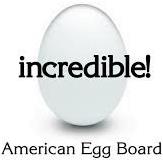 The American Egg Board (AEB) circulates Nielsen retail sales data as a service to the industry. The latest report released December 20th reflected 52-week rolling sales and consumption of eggs and egg products for the period ending November 5th 2022. Nielsen data captures a proportion of retail volume and sales value of shell eggs, consumer-packed liquid and hard-boiled peeled eggs. Data is derived from supermarkets, groceries, Dollar outlets, drug and convenience stores all with annual sales in excess of $2 million. Some club warehouses provide data but Costco is excluded.
The American Egg Board (AEB) circulates Nielsen retail sales data as a service to the industry. The latest report released December 20th reflected 52-week rolling sales and consumption of eggs and egg products for the period ending November 5th 2022. Nielsen data captures a proportion of retail volume and sales value of shell eggs, consumer-packed liquid and hard-boiled peeled eggs. Data is derived from supermarkets, groceries, Dollar outlets, drug and convenience stores all with annual sales in excess of $2 million. Some club warehouses provide data but Costco is excluded.
 The data assembled by Nielsen and distributed by the AEB for the past 52-weeks to November 5th documented sales of 3,129 million dozen egg-equivalents in all retail presentations over the 52-week period. This represents 40.5 percent of potential egg production updated on December 15th by the USDA for calendar 2022 totaling 7,738 million dozen eggs contributing to shell, liquid and exports. According to USDA data the shell-egg segment of the industry comprised 65.5 percent of all U.S. hens held for egg production for the week ending November 5th 2022.
The data assembled by Nielsen and distributed by the AEB for the past 52-weeks to November 5th documented sales of 3,129 million dozen egg-equivalents in all retail presentations over the 52-week period. This represents 40.5 percent of potential egg production updated on December 15th by the USDA for calendar 2022 totaling 7,738 million dozen eggs contributing to shell, liquid and exports. According to USDA data the shell-egg segment of the industry comprised 65.5 percent of all U.S. hens held for egg production for the week ending November 5th 2022.
- For the 52-week period in 2021-2022, retail sales of all shell-egg categories (shell, consumer liquid, hard boiled) expressed as egg-equivalents decreased by 1.4 percent from the corresponding previous 52 weeks 3,129 million dozen. Dollar value was 34.7 percent higher to $8,821 million. Projected per capita consumption in 2022 will attain 277.6 eggs representing a 1.0 percent decrease from the 2021 period as a result of flock depletion due to HPAI and depressed sales during 2021 as a result of COVID restrictions. Direct price comparisons are distorted by the late March and April 2020 panic buying in response to COVID and unprecedented price rises in the third and fourth quarters due to HPAI.
- On a rolling 52-week basis, the volume captured by Nielsen comprising retail shell-egg sales attained 3,002 million egg-equivalent dozens. Shell egg value at retail was $8,304 million with an average 2021-22 unit value of $2.77 per dozen. Egg alternatives including liquid, frozen and powdered egg products converted to equivalent dozens attained 90.5 million dozen equivalents, a 4.3 percent decrease over the previous 52-week period but with a 4.2 percent increase in value to $318.2 million corresponding to a unit value of $3.51 per dozen. Rolling 52-week hard-boiled peeled egg sales attained 35.74 million dozen, with a 6.8 percent increase in volume and a disproportional 14.8 percent increase in value to $198.3 million compared to the previous 52-week period reflecting unit price of $5.54 per dozen in 2022.
- In classifying retail sales by product segment, conventional (caged) eggs represented 72.9 percent and cage-free 17.5 percent. Free-range and pastured combined amounted to 9.6 percent. This figure is however based on loose and inconsistent definitions of these categories of housing with evident deficiencies in capture of sales data. Rolling 52-week conventional (non-organic) egg sales decreased 9.7 percent in volume but were 40.3 percent higher in value.
- The report indicated that 7.1 percent of shell eggs were marketed under the USDA Certified Organic shield up 1.8 percent in volume and 11.6 percent in value.
- With respect to volume of other than generic shell eggs, 52-week rolling branded egg sales comprised 30.3 percent of retail sales compared to 69.7 percent for private label. Branded eggs generated 38.4 percent of dollar value compared to private label at 61.6 percent. Branded eggs increased by 3.1 percent in volume and 28.9 percent in value over the past 52 weeks.
- In analyzing retail channels for shell eggs, 52-week rolling values compared to the previous period in 2021 documented that supermarkets and groceries (57.5 percent of sales) decreased by 2.9 percent, drugstores (0.1 percent of sales) lower by 22.6 percent, convenience stores (1.1 percent of sales) were down by 4.0 percent and the combination of club stores and Dollar stores (41.2 percent, excluding Costco, an important deletion given their volume) increased by 3.8 percent presumably with the largest contribution from big-box club stores other than Costco.